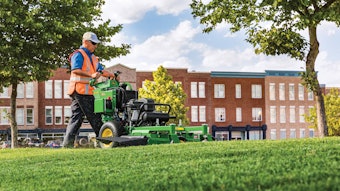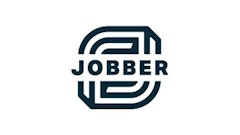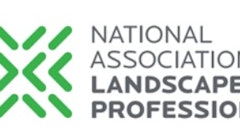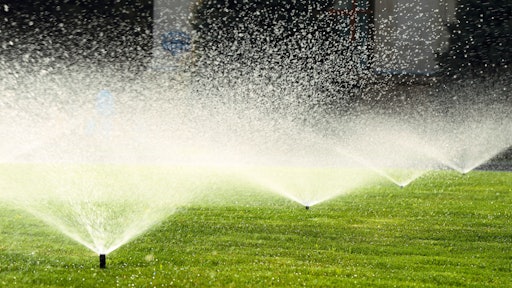
The latest in irrigation best practices can help green industry professionals save time and money.
According to the Irrigation Association, irrigation technicians can earn anywhere between $30,000-$45,000 a year and that is for irrigation services alone.
SiteOne hosted its National Virtual University on Nov. 30, a virtual event with industry leaders to teach lawn and landscape business owners ways to improve the services they offer, their preventative care, irrigation management and more. Reid Garner, sales manager at FX Luminaire (now a Hunter company) based in San Marcos, Calif., hosted the “Smart Irrigation Beyond Smart Controllers” webinar explaining the importance of regularly maintaining irrigation systems with different devices, sensors and techniques to optimize water usage.
Smart Water Management
Many industry contractors are not making it a best practice to maintain irrigation systems regularly. For the best results in irrigation, it is important that systems use proper design, installation, and maintenance. That can be achieved by using smart controllers. These controllers can estimate or measure depletion of available plant soil moisture to operate an irrigation system, replenishing water as needed, while minimizing excess water use.
To start, the first, and possibly the least, expensive thing you can do is to install a check valve in the sprinkler head. This eliminates drainage at lower heads, reducing water waste. When pressure is too high, water can overflow into areas that do not require water, like the street and sidewalks and the areas that require watering may be getting misted. One way to handle this issue is by investing in point of connection pressure regulators (PRV). This is a plumbing fixture that reduces incoming service line pressure for the entire system.
“This is good if you’ve got extremely high pressure because you can reduce it at the point of connection, optimize it down into that range for irrigation. Then it is also going to reduce the pressure on the entire system, the main line included, drastically rescuing the wear and tear on that piping system,” Garner says.
Garner notes that 30 pounds per square inch (psi) with pressure regulator uses 190 gallons (about the volume of a large refrigerator) per cycle (80 gallons less than 50 psi unregulated), which equates to 22,800 gallons (about the volume of a one car garage) a year (9,600 gallons a year less than 50 psi unregulated).
Devices and Sensors
Another best practice Garner suggests is installing devices that contribute to the maintenance of irrigation systems. For example, flow sensors produce a repeatable signal proportion to the flow, and it sends that signal to the controller. The flow sensors monitor the flow in real time, and you can set high or low flow alarms to alert you when there is a broken head or a broken pipe. Without this sensor, it is difficult to determine when you are using more water in a particular zone, or if there is a leak. Flow sensors can also be beneficial to those who have an allotted amount of water that you are allowed to use.
Similar to flow sensors, rain and weather sensors are designed to suspend an irrigation cycle when rain is detected, which is already a law in states such as Georgia and Florida. These sensors allow you to monitor your water use and compare it to the previous year.
Balancing Rotor Nozzles Save up to 30% on Water
Garner also talked about the importance of balancing rotor nozzles. “A lot of times you'll get a case of rotors from the distributor, such as SiteOne and its pre-nozzle with the No. seven, you go out and you throw a No. seven nozzle in every rotor that's going into the system, whether that rotor is covering a quarter slice of the pie, a 180, a half slice of the pie or a 360 and we'll talk about why you don't want to do that,” Garner says.
Two items are needed to balance a rotor: the manufacturer’s catalog with the nozzle performance charts and the nozzle tree.
For example, when watering a 90-degree arc, use a 1 gallon per minute (gpm) nozzle.
“When watering an area of 180 degrees, you don't want to use a 1 gpm nozzle, because you're covering twice the area with the same amount of water,” he says. “So, that area would only be receiving half the amount of water. It would work best to use a 2-gpm nozzle to cover twice the area. Same principle applies if you're covering a 360-degree area.”
When rotor nozzles are balanced, water use and the amount of grass that receives treatment is improved.
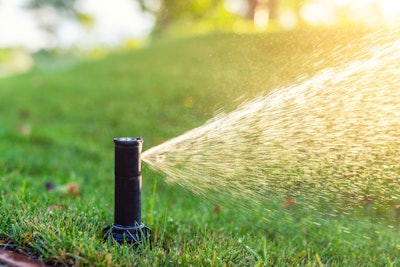 © Kirill Gorlov-stock.adobe.com
© Kirill Gorlov-stock.adobe.com
Head-to-Head Coverage
When you install an irrigation system, it is essential to ensure the sprinkler heads are spaced out enough that water gets evenly distributed across the grass. Grass closest to the system will receive the most amount of water, so you want the heads to be closer together to balance out what gets covered, Garner says.
If sprinkler heads are too far apart, water will not reach the middle ground, which will result in brown patches.
“It’s simple math,” he says. “If your yard dimensions are 40-feet-by-60-feet, the key would be to get each head spaced every 20 feet, so there is head-to-head coverage. Why is head-to-head coverage so important? If you were to use one rotor and put a catch can every 10 feet away from that rotor, the cup that is closest to that head is going to get more water than the one furthest away.”
He cautions contractors to take in account the water pressure and weather. The one grassy area guaranteed to get the most amount of water is the area closest to the head so, this is a key strategy to improve water use and to keep all of grass greener.
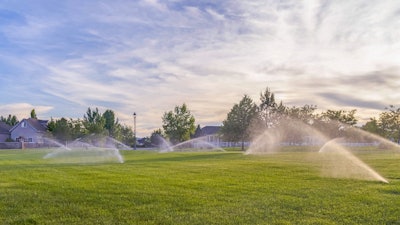 ©Jason-stock.adobe.com
©Jason-stock.adobe.com
Irrigation Audits
Are you a certified landscape irrigation auditor through the Irrigation Association (IA)? This is an opportunity to provide clients with an efficient irrigation system without a third party. Becoming a certified irrigation auditor allows contractors to dive into the details of precipitation rates, balance rotor nozzles and run an efficient irrigation system.
An irrigation audit consists of placing 24 catch cups in the irrigation zone and allowing time to collect data to determine how much water is in each catch cup. That resulting number is the distribution uniformity (DU) and, which shows how uniformly water is being applied to a lawn.
“If you've got a 90% DU, that means that you're pretty even across the board,” he says. “If you’ve got a 50% DU, that means that those dry areas are pretty dry. The average is, there are a lot of wetter areas than there are dry areas. It gives you two things that gives you the actual precipitation rate. Doing this will give you a hard tangible precipitation rate that you can use and then it'll give you kind of where your inefficiencies are, and what you need to do to correct them.”
To improve your DU, check your pressure, make sure you are not over pressure or under pressure, check headspace and make there is head-to-head coverage, and the rotor nozzles are balanced. MP rotator nozzles are the most efficient, as they have an average of 75%.
More to Consider
Smart water management also includes making adjustments in the field and using controllers and other accessories.
Garner reminds contractors to straighten nozzle heads, set the arc and make sure water is not aimed at the street and sidewalks. Raise sunken sprinklers, because they do sink down over time, especially in taller turf and replace nozzles when necessary.
He also suggests investing in maintenance remotes. Many connect through Wi-Fi from mobile phones and tablets and allow you to manage irrigation systems to identify any maintenance that may be needed.
“In years past, we have had handheld remotes but nowadays, with cloud connected Wi-Fi connected controllers, your phone or your tablet can be your remote control. This basically allows you to run through the system within sight of the test location to identify breaks and visually inspect the system,” says Garner. “I highly recommend investing in one of these if you offer system maintenance.”


